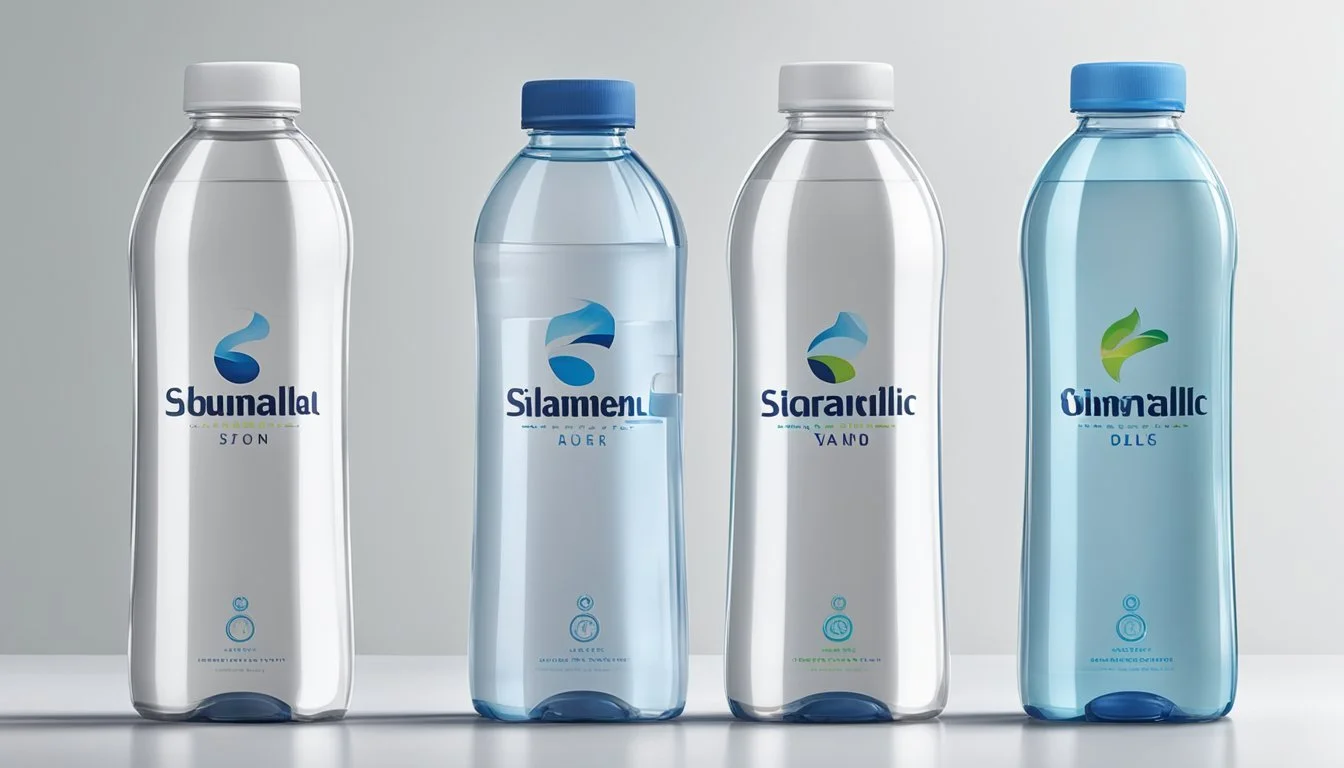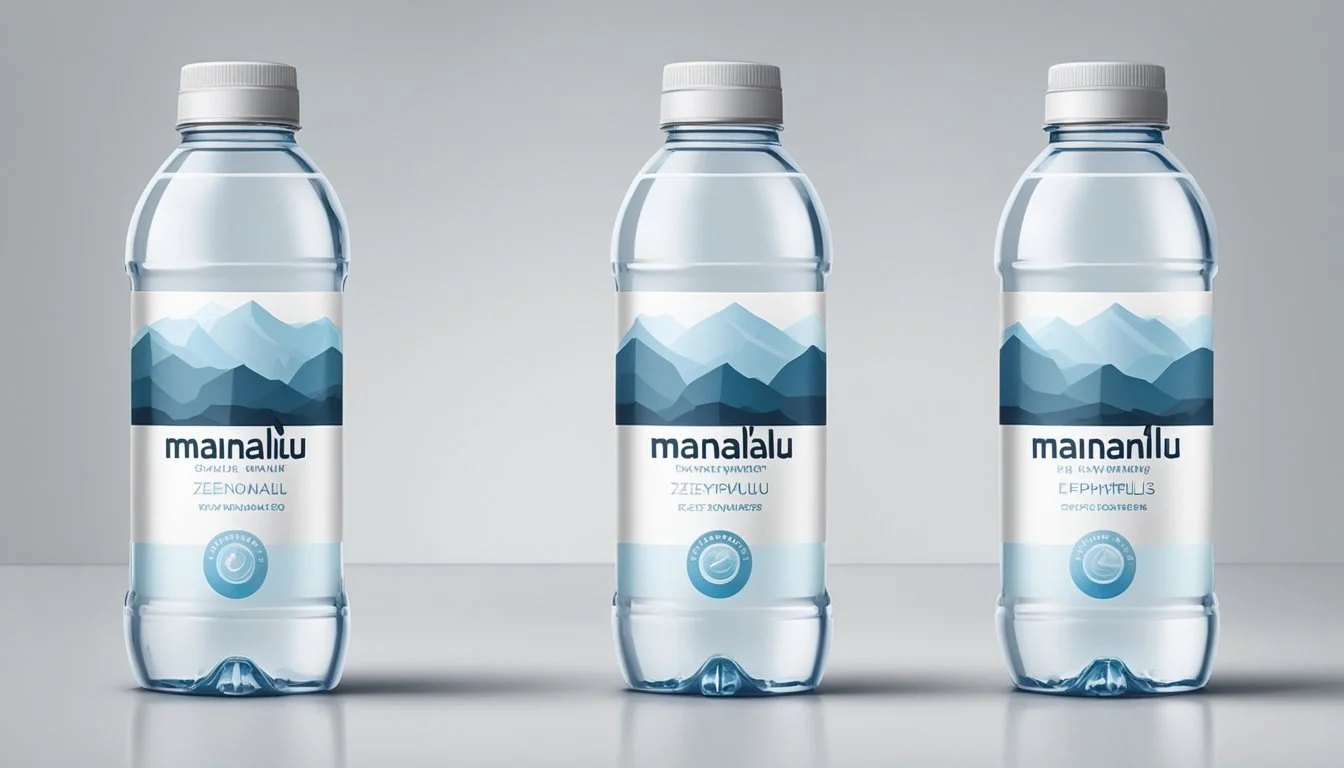Zephyrhills vs. Mananalu
An Expert Comparison of Bottled Water Choices
When it comes to choosing bottled water, consumers often find themselves comparing various brands to determine which one best meets their hydration needs. Two popular choices on the market today are Zephyrhills and Mananalu. Zephyrhills, drawing from its natural spring sources in Florida, prides itself on offering pure, crisp water that many find incredibly refreshing. Mananalu, on the other hand, emphasizes sustainability, using aluminum cans for its packaging to reduce plastic waste while delivering clean, delicious water.
For those prioritizing taste and natural sourcing, Zephyrhills stands out as a top choice. Its water, collected from carefully protected springs, offers a reliable option for those seeking a traditional bottled water experience. Consumers appreciate its consistency and the brand's long-standing reputation for quality.
Mananalu captures a different segment of the market by appealing to eco-conscious consumers. By choosing aluminum cans, Mananalu addresses environmental concerns, offering a viable alternative to conventional plastic bottles. The taste of Mananalu water is also highly rated, combining clean flavor with the added benefit of sustainable packaging.
Understanding Bottled Water
Bottled water comes in various types, each differing in source, treatment methods, and mineral content. Regulatory standards ensure quality and safety, while understanding hydration's health implications is crucial.
Varieties of Bottled Water
Spring water is sourced from natural springs and is rich in minerals. Purified water undergoes processes like distillation or reverse osmosis to remove impurities. Mineral water contains minerals naturally present at the source. Alkaline water has a higher pH, often achieved through ionization.
Tap water, typically treated by municipalities, contrasts with bottled options. Each type presents unique taste profiles and health benefits, catering to different consumer preferences.
Regulations and Standards
The FDA regulates bottled water under the Federal Food, Drug, and Cosmetic Act. Standards ensure safety, labeling accuracy, and quality. Bottled water must meet stringent criteria regarding contaminant levels and purification processes.
EPA regulations govern tap water, setting benchmarks for contaminants like lead and chlorine. While both bottled and tap water must adhere to high safety standards, the processes and regulatory bodies differ significantly.
Health Implications of Hydration
Proper hydration is vital for overall health. Water assists in digestion, nutrient absorption, and temperature regulation. Mineral water can contribute essential minerals like calcium and magnesium.
Choosing between bottled and tap water often comes down to personal preference and lifestyle. Understanding the different types and their health implications can help individuals make informed decisions to stay properly hydrated.
Profile of Zephyrhills
Zephyrhills, a well-regarded bottled water brand, is renowned for its natural spring water sourced from Florida. The following key points elaborate on the source, taste, pH levels, and reputation of Zephyrhills.
Source and Process
Zephyrhills sources its water from natural springs located in Florida. The water undergoes minimal filtration to preserve its natural characteristics. The springs are carefully monitored to maintain high-quality standards. Natural springs are the primary choice for Zephyrhills, ensuring the water remains free from artificial additives. Consumers can trust that the spring water retains its natural mineral content and purity.
Taste and PH Levels
Zephyrhills natural spring water has a taste that is often described as fresh and crisp. The water contains naturally occurring minerals, enhancing its flavor. With a pH level typically falling around 7.7, it fits well within the ideal range of 6.5 to 8.5 for drinking water. This balance ensures the water isn't too acidic or too alkaline, making it pleasant for most palates.
Brand Reputation and Consumer Trust
Zephyrhills has built a strong reputation over the years. Known for its consistent quality, it has gained the trust of many consumers. Consumer reviews frequently highlight its refreshing taste and reliable quality. The brand's commitment to sustainability and quality control further enhances its standing in the market, making Zephyrhills a preferred choice for natural spring water.
Profile of Mananalu
Mananalu is distinguished by its commitment to sustainability and high-quality products. With a strong focus on eco-friendly packaging, Mananalu has garnered attention in the market for its environmental impact and innovative approach.
Company Vision and Sustainability Focus
Founded by Jason Momoa, Mananalu’s primary mission is to reduce single-use plastic waste. The company emphasizes the use of 100% recyclable aluminum cans, positioning itself as a socially responsible choice for consumers.
Mananalu actively engages in environmental advocacy, partnering with organizations that work towards ocean conservation. Their vision includes not just providing clean water, but also contributing to a more sustainable future.
Product Range and Quality
Mananalu offers purified water packaged in resealable aluminum bottles. This choice of packaging ensures the water remains fresh and eco-friendly.
Their rigorous quality assurance processes guarantee that the water meets high standards of purity and taste. Consumers can rely on Mananalu for both hydration and sustainability, making it a notable player in the premium bottled water market.
Consumer Perception and Market Presence
Mananalu has cultivated a positive consumer perception through its dedication to sustainability and high-quality products. Consumers appreciate the brand’s efforts to combat plastic pollution.
In the market, Mananalu is gaining visibility and attracting a growing customer base. Its eco-friendly packaging and clear stance on environmental issues resonate well with a demographic that values sustainability.
Comparative Analysis
Zephyrhills and Mananalu offer distinct features that cater to various consumer preferences, focusing on water quality, sustainability, convenience, and cost.
Water Quality and Purity
Zephyrhills sources its water from natural springs in Florida, emphasizing its natural mineral content. It retains minerals like calcium and magnesium, contributing to the water's taste and potential health benefits.
Mananalu, founded by Jason Momoa, offers purified water. It employs advanced filtration methods to remove contaminants, ensuring a neutral taste. The absence of minerals is a key difference between Mananalu’s purified water and Zephyrhills’ mineral-rich spring water.
Environmental Impact and Sustainability
Mananalu prioritizes reducing plastic waste by packaging water in 100% recyclable aluminum cans. This eco-friendly approach aligns with its mission to eliminate single-use plastic bottles.
Zephyrhills uses plastic bottles but seeks to offset environmental impact by incorporating recycled materials. Though less eco-friendly compared to Mananalu, Zephyrhills focuses on improving plastic sustainability.
Packaging and Consumer Convenience
Mananalu’s aluminum cans are sturdy and fully recyclable, making them a convenient option for environmentally-conscious consumers. The cans also protect water from light, maintaining purity and taste.
Zephyrhills’ plastic bottles are lightweight and available in various sizes, which can be convenient for different consumption needs. However, plastic bottles are less environmentally friendly and may not appeal to eco-conscious consumers as much as cans.
Price Point and Accessibility
Zephyrhills, being a widely distributed brand, offers competitive pricing and is accessible in many retail stores, mainly across the southeastern United States. This makes it a reliable choice for daily use.
Mananalu, with its premium positioning, may come at a higher price. It is available in select retail locations and online, making it somewhat less accessible but appealing to those prioritizing sustainability and purity.
Industry Perspective
The bottled water industry is dynamic, with evolving market trends, a wide array of competing brands, and a forward-looking approach towards sustainable consumption. These elements shape consumer choices and influence brand strategies.
Market Trends in Bottled Water
The bottled water market has seen a sustained increase in demand, driven by a growing preference for healthier beverage options. Premium and flavored waters are becoming more popular, appealing to consumers seeking variety.
The rise of functional waters, enriched with vitamins and minerals, highlights the trend towards health-conscious purchasing. Sustainability is also a key trend, with a significant number of consumers opting for eco-friendly packaging.
Competing Brands and Alternatives
Brands like Zephyrhills and Mananalu compete in a crowded market, each with unique selling points. Zephyrhills leverages its reputation for natural spring water sourced from protected springs in Florida. Its consistent quality and taste have built a loyal customer base.
Mananalu, on the other hand, focuses on sustainability. Using aluminum packaging, it aims to reduce single-use plastic waste. This eco-friendly approach appeals to environmentally-conscious consumers.
Alternatives to traditional bottled water, such as filtered tap water and reusable bottle systems, are also gaining traction, offering cost-effective and sustainable options.
The Future of Bottled Water Consumption
The future of bottled water consumption will likely hinge on innovation and sustainability. Advances in packaging technology will aim to further reduce environmental impact, with more brands potentially adopting materials like aluminum or biodegradable plastics.
Consumer behavior is expected to shift further towards healthier and more transparent product options. Brands will need to adapt by offering cleaner labels and more transparent sourcing practices to maintain trust and market share.
Technology integration, such as smart bottles that track hydration, may also play a role, catering to tech-savvy consumers looking for personalized experiences.
More About Zephyrhills
Core Hydration vs Zephyrhills: Which Bottled Water is Better?
Icelandic Glacial vs Zephyrhills: Which Bottled Water is Better?
Mountain Valley Spring Water vs Zephyrhills: Which Bottled Water is Better?
Nestle Pure Life vs Zephyrhills: Which Bottled Water is Better?
Poland Spring vs Zephyrhills: Which Bottled Water is Better?
San Pellegrino vs Zephyrhills: Which Bottled Water is Better?
Zephyrhills vs Aqua Carpatica: Which Bottled Water is Better?
Zephyrhills vs Cascade Mountain: Which Bottled Water is Better?
Zephyrhills vs Crystal Geyser: Which Bottled Water is Better?
Zephyrhills vs Hawaii Volcanic: Which Bottled Water is Better?
Zephyrhills vs Hawaiian Springs: Which Bottled Water is Better?
Zephyrhills vs Kirkland Signature: Which Bottled Water is Better?
Zephyrhills vs Purely Sedona: Which Bottled Water is Better?
Zephyrhills vs Richard's Rainwater: Which Bottled Water is Better?
Zephyrhills vs Solan de Cabras: Which Bottled Water is Better?
Zephyrhills vs Talking Rain AQA: Which Bottled Water is Better?
Zephyrhills vs Whole Foods 365: Which Bottled Water is Better?
Zephyrhills vs Whole Foods Italian Still Mineral water: Which Bottled Water is Better?
More About Mananalu
Hawaiian Springs vs Mananalu: Which Bottled Water is Better?
Icelandic Glacial vs Mananalu: Which Bottled Water is Better?
Mananalu vs Cascade Mountain: Which Bottled Water is Better?
Mananalu vs Kirkland Signature: Which Bottled Water is Better?
Mananalu vs Richard's Rainwater: Which Bottled Water is Better?
Mananalu vs Talking Rain AQA: Which Bottled Water is Better?
Mananalu vs Whole Foods Italian Still Mineral water: Which Bottled Water is Better?
Mountain Valley Spring Water vs Mananalu: Which Bottled Water is Better?
Nestle Pure Life vs Mananalu: Which Bottled Water is Better?






